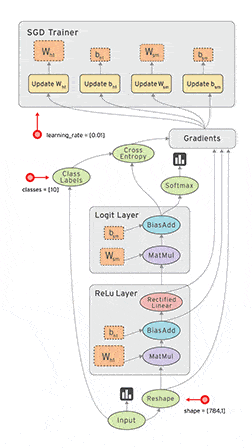Google just unveiled their new open source machine learning system called “TensorFlow.” Over the past few years, Google has been gradually integrating their proprietary machine learning technology into a variety of different products. Google latest AI technology has the ability to build and train neural networks up to five times faster than their legacy system.
Here’s what Google CEO, Sundar Pichai had to say about the new technology:
We hope this will let the machine learning community—everyone from academic researchers, to engineers, to hobbyists—exchange ideas much more quickly, through working code rather than just research papers. And that, in turn, will accelerate research on machine learning, in the end making technology work better for everyone. Bonus: TensorFlow is for more than just machine learning. It may be useful wherever researchers are trying to make sense of very complex data—everything from protein folding to crunching astronomy data.

Google refers to this technology as “deep learning.” In a nutshell, deep learning uses a set of complex algorithms that help machines understand high-level data abstractions and uses them to process non-linear transformations. If you think about it in the context of search engines, this is how Google can determine the semantic relationships between words used in search queries, to better understand what the user is looking for. Imagine if a user searched for “jaguar” on Google. Google can use deep learning to determine whether the user is searching for the animal, the car manufacturer, the operating system or my high school mascot (Go Jaguars!).
Deep learning is built on a constellation of neural networks—systems that to mimic the pathways between neurons in the human brain. These neural networks feed off of data, and then use that data to perform tasks.
We still have a long way to go before AI is sophisticated enough to think like a human. According to Pichai, “Machine learning is still in its infancy — computers today still can’t do what a 4-year-old can do effortlessly, like knowing the name of a dinosaur after seeing only a couple of examples.”
One of the main of making this new technology open source is that Google can now begin to leverage the help of savvy developers and scientists to improve how Google applies machine learning to their own products.
[iframe id=”https://www.youtube.com/embed/oZikw5k_2FM” mode=”normal” autoplay=”no”]


